The leather tannery industry in Bangladesh poses severe health and environmental risks, impacting both workers and communities near polluted waterways. Workers, including vulnerable groups like children, are exposed to toxic substances daily. They often handle chemicals like hexavalent chromium without protective gear, leading to acute and chronic health problems. Prolonged exposure to these chemicals causes skin diseases, respiratory issues, and in many cases, cancer. Workers frequently suffer from chemical burns, lung damage, and organ failure, exacerbated by inadequate medical care and lack of awareness about safety measures.
Communities living near tanneries and polluted rivers like the Buriganga face additional threats. An estimated twenty thousand cubic liters of toxic wastewater are dumped into the river daily, contaminating water supplies. This effluent contains heavy metals and carcinogenic compounds that leach into the soil and groundwater, making it unsafe for drinking, irrigation, or fishing. People relying on the river for their livelihoods and daily needs suffer from waterborne diseases, gastrointestinal problems, and developmental disorders due to long-term exposure.
Moreover, the widespread environmental degradation caused by this pollution extends to aquatic ecosystems, killing fish and other vital organisms, which further impacts food security and income sources for local fishermen. The tannery industry, while economically significant, poses an enormous public health crisis. Addressing these challenges requires stricter regulations, enforcement of waste treatment protocols, and better protection for workers, ensuring the industry operates sustainably without endangering human lives or ecosystems.

Tannery workers, sometimes children, are working day long usually unprotected exposed to heavily toxic residues while processing the skins to produce leather. The majority of the leather is exported to the U.S., E.U. and China. Removing remaining hair from the skin using a dull knife, Hazaribagh tannery, Bangladesh, October 2014

Hazaribagh tannery, Bangladesh, October 2014

Tannery workers in Hazaribagh, Dhaka, Bangladesh, September 2014

Tannery in Hazaribagh, Dhaka, Bangladesh, October 2014

Tannery worker, Hazaribagh, Bangladesh, October 2014

Soaked skins before being processed into leather, Hazirabagh, Bangladesh, October 2014

Hazaribagh, Bangladesh, October 2014
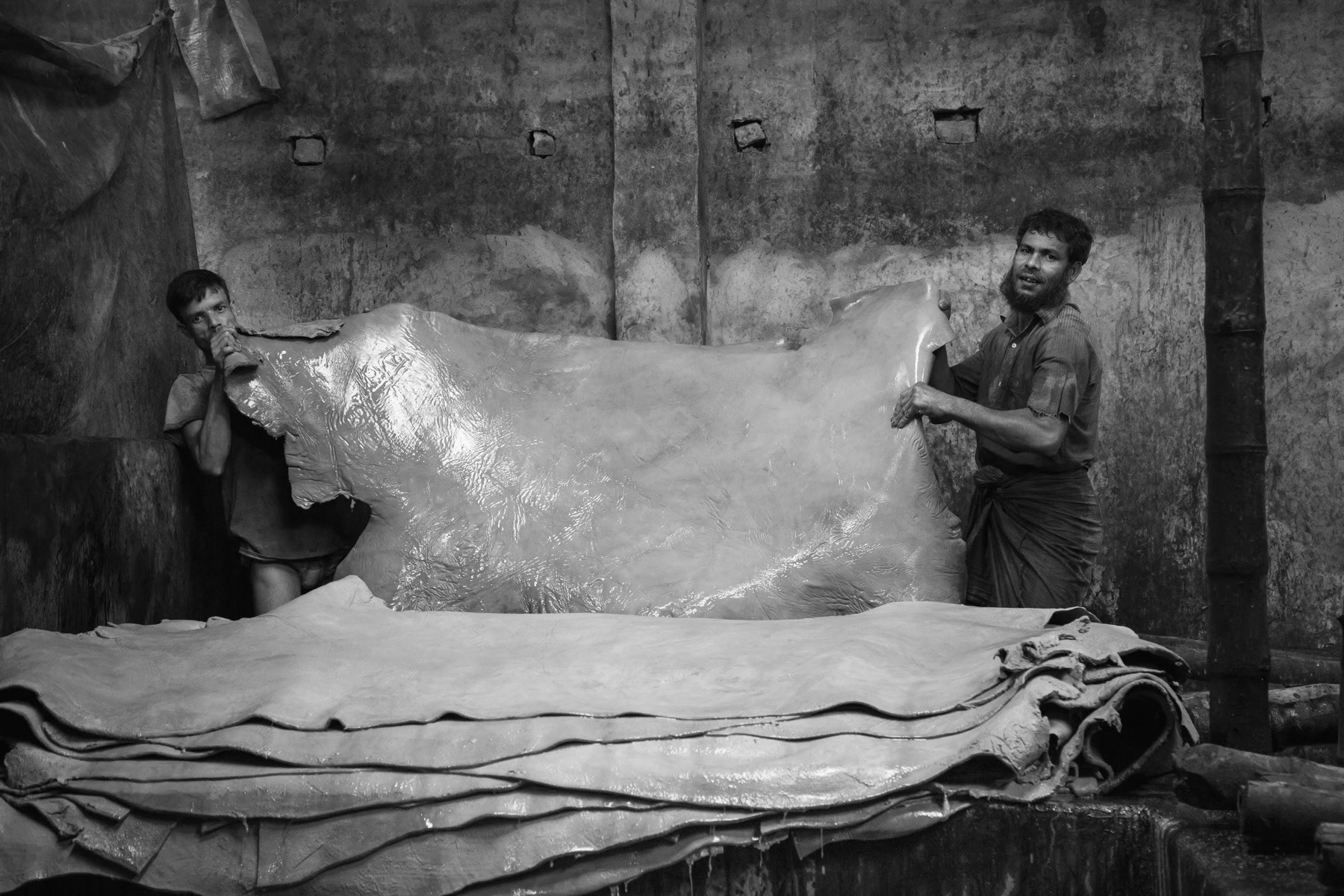
Soaking skins in a chemical mixture to soften them, Hazaribagh tanneries, Bangladesh, October 2014

Wooden drums where animal skin is rotating for several hours, Hazaribagh, Dhaka, October 2014

Tannery workers unprotected sorting the skins in a chemical bath, Hazirabagh neighbourhood, Dhaka, Bangladesh, October 2014

Hazaribagh tannery, Bangladesh, October 2014

Skin processing for the production of leather, Hazribagh tanneries, Dhaka, Bangladesh, October 2014

Tannery toxic waste water that will be dumped in the nearby Buriganga river, Hazaribagh tanneries, Dhaka, Bangladesh, October 2014

Soft leather after the tanning process, Hazaribagh, Dhaka, October 2014

Tannery in Hazaribagh, a Dhaka neighbourhood where more than 250 tanneries are registered on territory merely 25 hectares, Dhaka, Bangladesh, October 2014

Tannery, Hazaribagh in Dhaka, October 2014
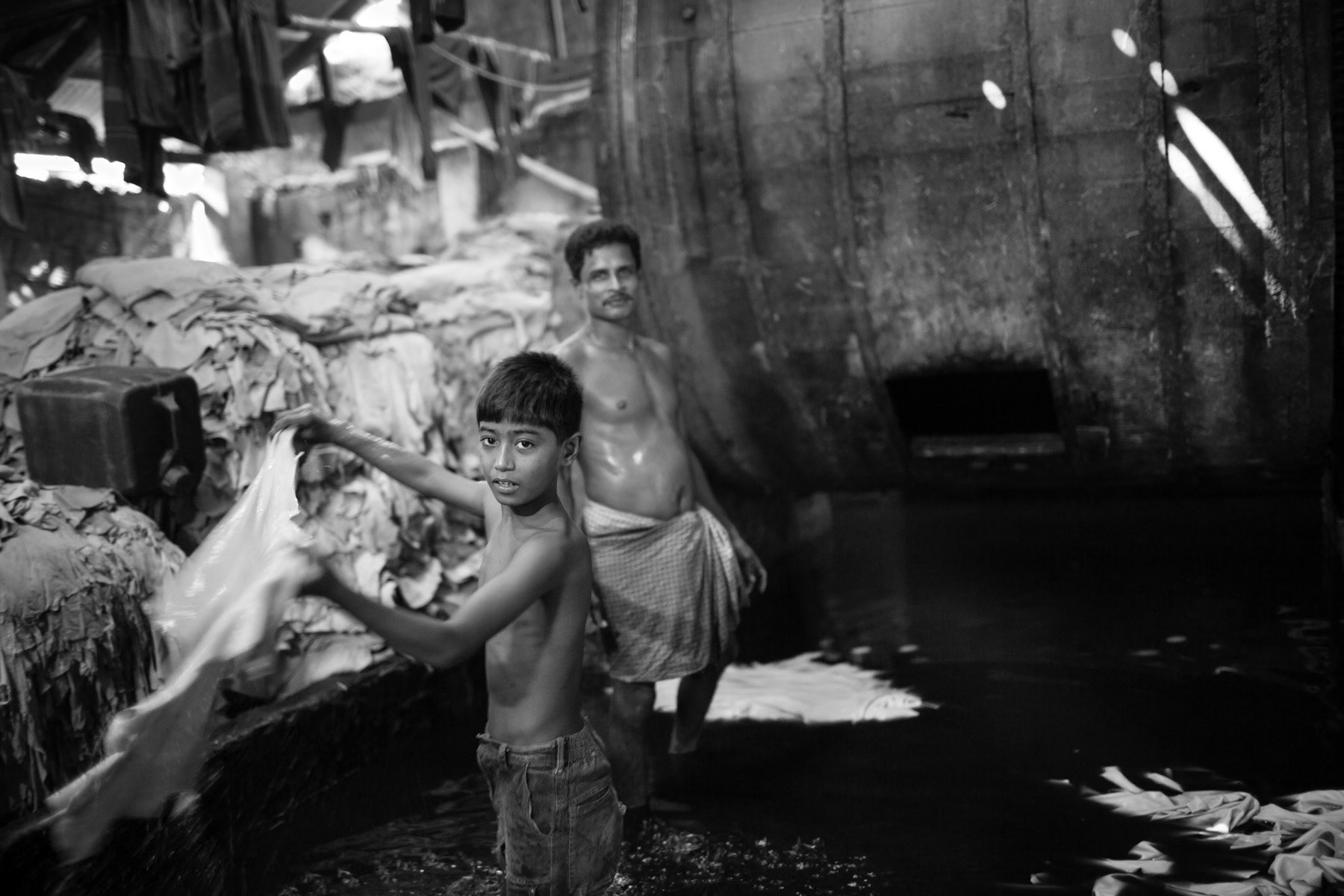
Toxic hexavalent chromium is widely used as tanning agent, causing serious health problems such as skin and respiratory diseases. Hazaribagh tannery, Bangladesh, October 2014
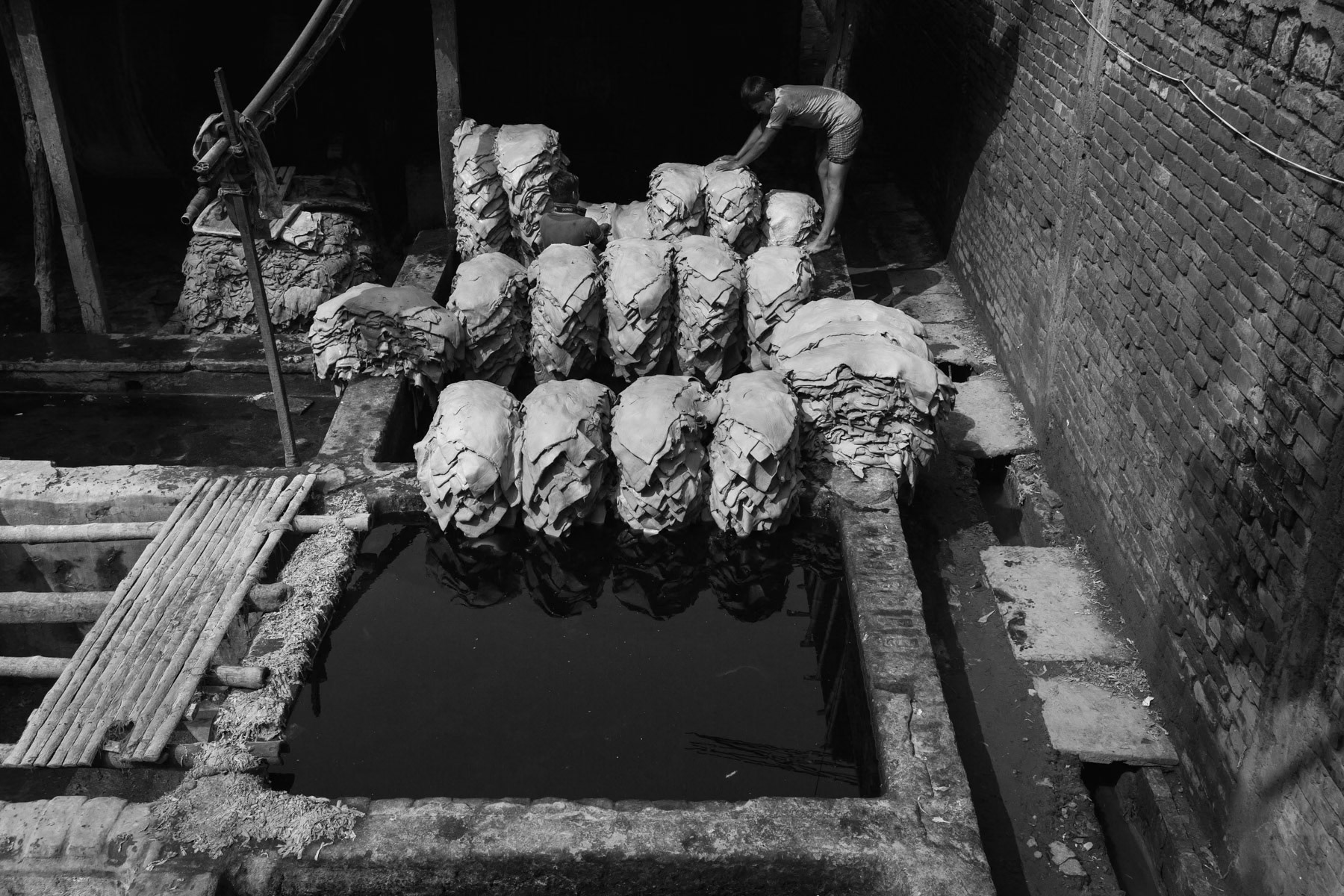
Hazaribagh tannery, Bangladesh, October 2014

Leather worker, Hazirabagh tannery, Dhaka, Bangladesh, October 2014

Tannery workers, Hazaibagh in Dhaka, May 2015
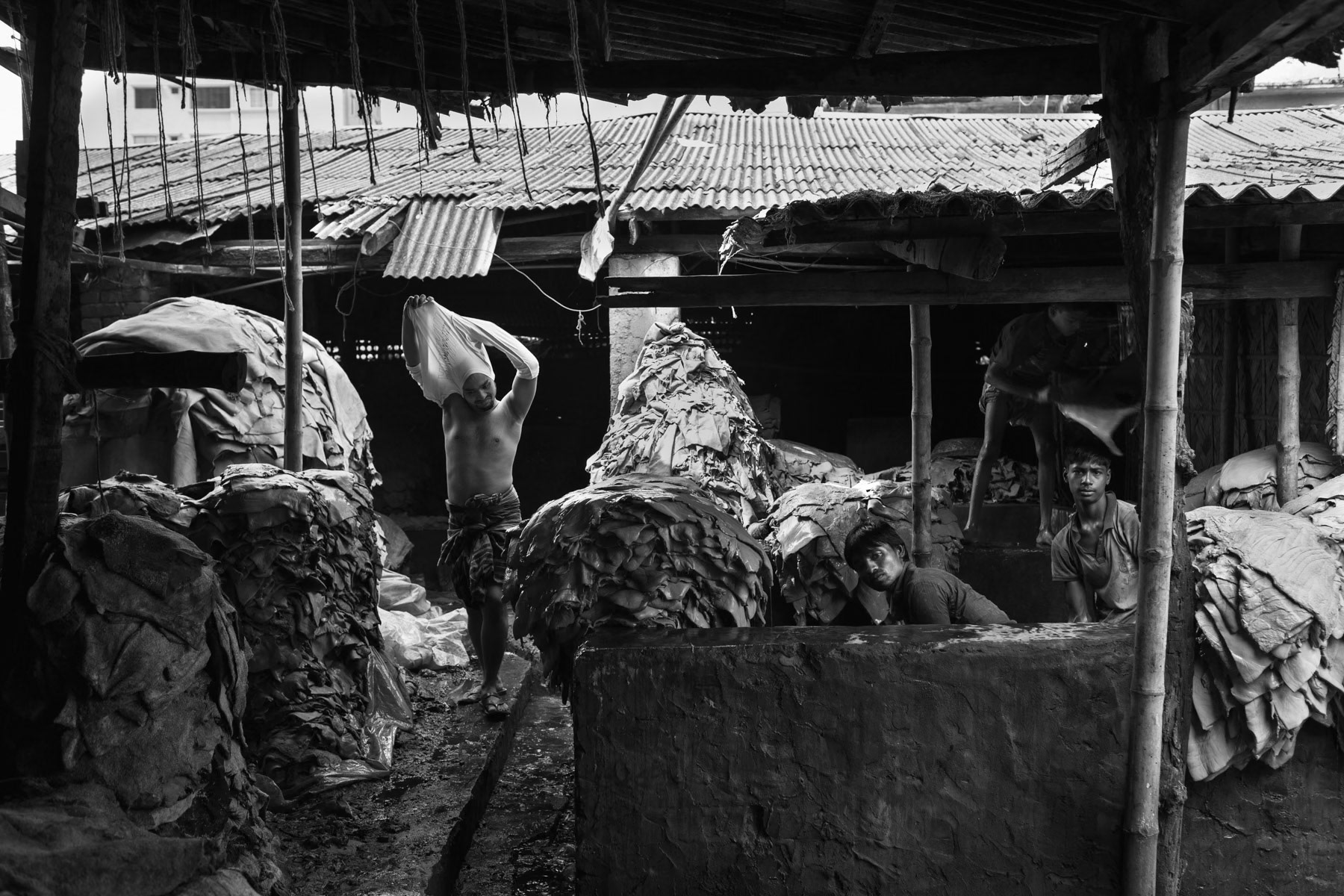
Tannery workers, Hazaribagh, Dhaka, Bangladesh, October 2014

Removing skins from the chemical baths, Hazaribagh tanneries in Dhaka, Bangladesh, October 2014

From lime and salt soaked skins to leather. Tannery in Hazaribagh, Dhaka, October 2014

Preparing newly arrived skin before chemical process. Hazirabagh tanneries, Dhaka, Bangladesh, May 2015

Tannery workers, Hazaibagh in Dhaka, May 2015

Tannery worker mixing chemicals before raw skins are put in the process drums. Hazaribagh tannery, Dhaka, Bangladesh, May 2015

Tanneries of Hazaribagh, Dhaka, Bangladesh, May 2015

Tannery workers, Hazaibagh in Dhaka, May 2015

Tannery workers, Hazaibagh in Dhaka, May 2015

Children working in the skin drying space of the tannery, Hazaribagh, Bangladesh, May 2015
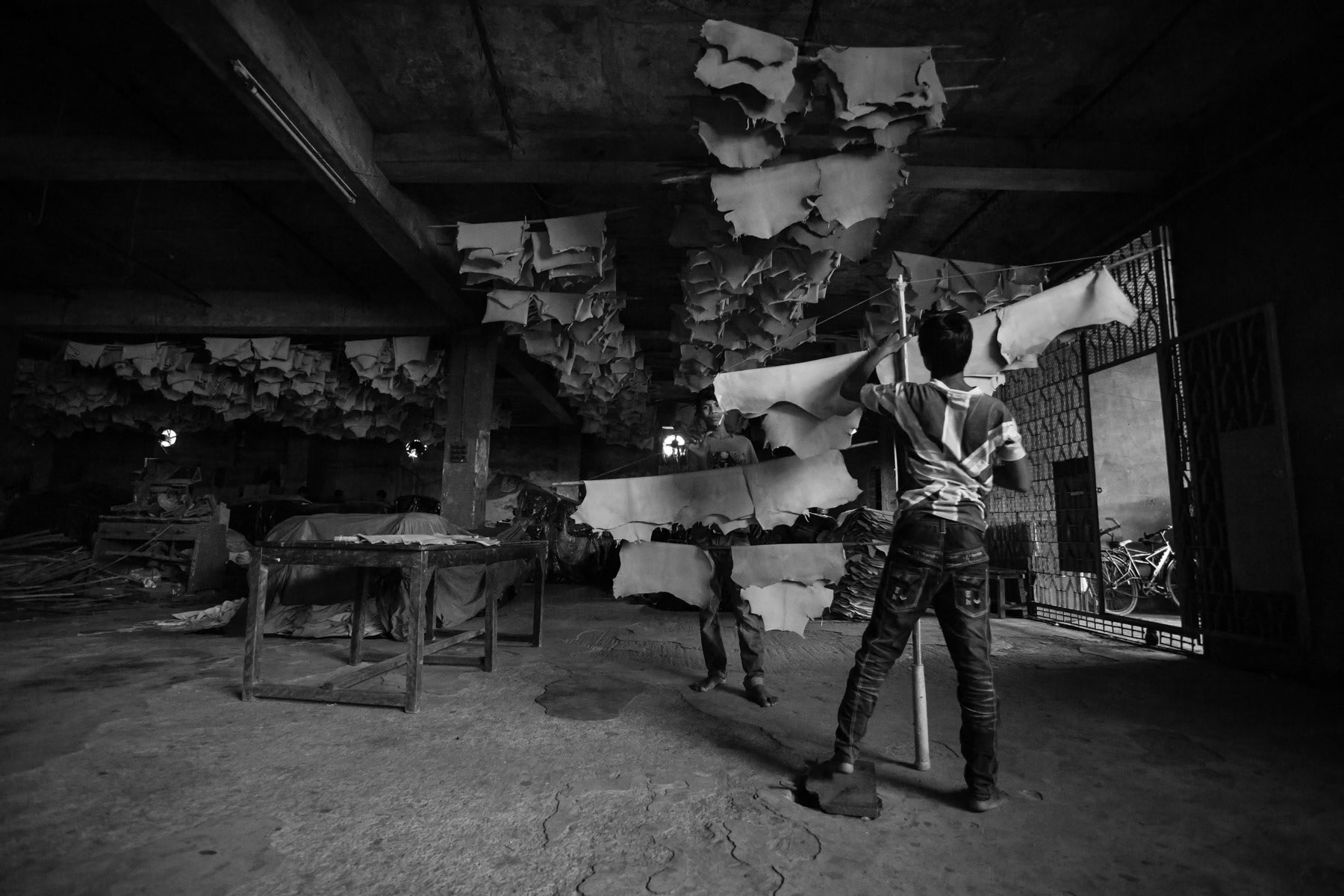
Children working in the skin drying space of the tannery, Hazaribagh, Bangladesh, May 2015

Rinsing pools, Hazaribagh tannery, Dhaka, Bangladesh, May 2015

Rinsing process of the skins, Chittagong tannery, Bangladesh, May 2015

Measuring cow skin before buying, Chittagong tannery, Bangladesh, May 2015

Sorting the finished leather, Chittagong tanneries, May 2015

Tannery in Chittagong, Bangladesh, May 2015










